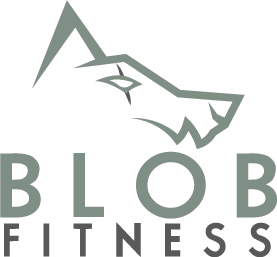
Let's face it, for a majority of people, if you are already not into cardio, it's most likely not in your regimen.
This isn't the case for everyone. Most people I know or talk to though seem to skip it.
When people do incorporate it, they seem to be more exhausted and tend to overtrain in general so they cut it out.
This article is going to cover how to properly incorporate cardio into your regimen without overtraining and how to reap the benefits.
What is Cardio
First, let's briefly go over what cardio is.
Cardio involves sustained physical activity that increases heart rate that is sustained for a certain amount of time.
It's a cornerstone of a well-rounded fitness routine that has vast benefits to it.
Benefits of Cardio
Cardio is more than just calorie burning (even though that's a benefit all by itself).
The benefits of cardio include lower risk of heart disease, enhanced lung capacity, reduced stress and anxiety, improved brain function, and better regulation of blood sugar levels.
Granted, some/most of those benefits you can get from strength training / lifting weights.
However, enhanced lung capacity and endurance are where you can reap the benefits the most if you are someone who is an active lifter.
What many don't realize though is that your increased endurance will start to carry over into your strength training.
Improved endurance during your strength training can help you lift more which can lead to overall better gainz.
Different Zones of Cardio and What They Target
Cardio can be categorized into different zones, each targeting specific fitness goals.
These zones range from low intensity, which is great for fat burning and endurance, to high intensity, which focuses on improving cardiovascular capacity and strength.
Understanding these zones helps in tailoring a cardio program to meet individual fitness goals.
Let's briefly go over all the zones and their benefits:
Zone 1: Light Intensity
- Description: This zone is characterized by very light effort, like a leisurely walk. It's easy to maintain and allows for conversation during the activity.
- Benefits: Improves general health and recovery, and is ideal for beginners or for active recovery days.
Zone 2: Moderate Intensity
- Description: This is a step up, feeling like a steady, comfortable jog. It requires more effort but still allows for conversation.
- Benefits: Enhances endurance and aerobic capacity, burns fat efficiently, and is sustainable for longer sessions.
Zone 3: Aerobic Zone
- Description: This zone involves more vigorous activity, like a faster jogging pace. The conversation becomes more challenging.
- Benefits: Further improves aerobic capacity and cardiovascular endurance, starts to build anaerobic threshold.
Zone 4: Anaerobic Threshold
- Description: High-intensity efforts like fast running or cycling. Conversation is not possible at this intensity.
- Benefits: Increases maximum performance capacity, improves speed and power, and enhances calorie burn.
Zone 5: Maximum Effort
- Description: This is an all-out effort, sustainable only for short bursts, like sprinting at full speed.
- Benefits: Develops explosive power and speed, enhances athletic performance, and maximizes calorie burn in a short period.
You may have noticed I didn't include HR (heart rate) zones for each.
This is because everyone has different HR zones for these zones. If you use an Apple Watch or another fitness tracker, it may tell you your HR zone.
Granted, it may not be the most accurate, but it's a good ballpark.
How Much Cardio You Should be Doing for Longevity
The amount of cardio for longevity balances between reaping its benefits and avoiding burnout or injury.
I like to primarily focus on Zone 2 and Zone 5 cardio due to their benefits.
in a week plus around 20-30 minutes of Zone 5 cardio is best for most people.
How Much Zone 2 Cardio
Ideally, doing at least 180 minutes of Zone 2 cardio is best. However, I recommend trying to do 120 minutes first. You will still get good results and it won't feel like too much all at once. Increase the time slowly.
While the Zone 2 cardio may seem like a lot, Zone 2 is fairly easy and shouldn't impact recovery or performance.
With Zone 2 you can break up into multiple 30-40 minute sessions. They can also be longer but shouldn't be shorter than 30 minutes.
How Much is Zone 5 Cardio
Zone 5 if not done properly can cause additional fatigue and impact recovery.
It's recommended to get around 20-30 minutes per week.
I'd personally recommend doing this in 1 session but you can split it into 10-minute sessions throughout the week.
If doing it in 1 sitting, it's recommended to do the 4x4x4 method for Zone 5 cardio.
This means:
- 4 minutes in Zone 5
- 4 minutes rest (zone 1/2)
- Repeat 4 times.
How to Incorporate Into Regimen
Now that we know more about cardio, the different zones of cardio, and its benefits, how should you include it in your regimen?
Adding Zone 2 to Regimen as a Beginner
Assuming you don't do much cardio and you're just adding it to your regimen, I would recommend doing the following.
I would suggest first, starting with 2 20-minute Zone 2 sessions per week.
Within the next 2 weeks, increase this to 2 30-minute Zone 2 sessions per week.
2 more weeks after that, increase this to 3 30-minute Zone 2 sessions per week.
Lastly, increase to either 4 30-minute sessions or 3 40-minute sessions.
Mind you, this will only get you to the 120-minute mark.
To hit the 180-minute mark, you would need to either increase the times of your sessions (which is fine) or include more sessions.
Adding Zone 5 to Regimen as a Beginner
Now for Zone 5, if you are in decent shape already, I think the 4x4x4 method is perfect for you.
It will give you enough rest time overall and 4 minute burst of high effort shouldn't be too much.
If your cardio isn't great, I would recommend doing 1x4x4 (1 minute intensity, 4 minute rest, 4 times) 3 times a week.
Once comfortable enough, increase time to 2x4x4 for 2 sessions a week. Afterwards, 3x4x4 for 1 - 2 times a week and then 4x4x4.
Scheduling and Adding Zone 5
Let's say you're doing a 4-day split of Upper, Lower, Rest, Upper Lower, Rest, Rest.
Let's also say we're trying to follow the guidelines of
Your new schedule would look something like this:
- Upper + Zone 2 cardio (40 min)
- Lower
- Zone 2 cardio
- Upper + Zone 2 cardio (40 min)
- Lower
- Zone 2 cardio (40 min)
- Zone 5 cardio (20-30 minutes)
If you are someone who likes to have a full rest day(s), then you can do something like:
- Upper + Zone 2 cardio (60 min)
- Lower
- Rest
- Upper + Zone 2 cardio (60 min)
- Lower + Zone 5 cardio (20-30 minutes)
- Rest
- Rest
This means your workouts get longer, but that would be a way to incorporate it without removing complete rest days.
Beware of Overtraining
Overtraining in cardio can lead to exhaustion, injury, and decreased performance.
This can happen from doing too much Zone 5 or thinking you're doing Zone 2 but you're really in a high Zone 3 close to Zone 4.
Signs include prolonged fatigue, decreased motivation, and increased susceptibility to injuries.
If you experience any of the symptoms above, cut out a cardio session throughout your week.
Cardio Before or After Weight Lifting?
To reap the best benefits from your cardio workout and not impact your gainz, cardio before lifting would be best.
However, this would assume your intensity would stay the same for your lifting, which for most, it wouldn't. Performance would generally decrease doing cardio and then lifting.
Considering that, I would suggest doing what works best for you. Even though cardio before lifting would be best, we're talking about a small margin of benefit overall.
Do Cardio That's Sustainable for You
The key to long-term cardio success is choosing activities that you enjoy and can consistently integrate into your routine.
Walking, jogging, cycling, stair master, elliptical, etc. are all great options.
I always like to recommend doing something low-impact that you enjoy.
For me, this includes:
- Elliptical
- Cycling
- Air bike
- Walking/jogging
High-impact cardio activities over an extended period can lead to various injuries if not done correctly.
But again, I would recommend doing what you find the most sustainable.
Final Thoughts
Cardio is a must-include in your regimen. Knowing how to include it though is important and how much work you need to do without overdoing it.
With all the information above, you should be able to include cardio into your regimen without overtraining but also reap the benefits of cardio.
Get a Free Guide!
Similar Posts
Can cardio kill your gains? Discover how it impacts muscle growth, and how to balance cardio and strength.
Explore natural ways to lower blood pressure. Learn key tips and misconceptions to help you on your journey.
Explore our comprehensive guide to understanding heart health, delving into the essentials of cardiovascular disease, blood pressure, and heart health indicators.


